Can You Put An Electrical Outlet Under A Sink?

You may find a situation where you need an electrical outlet under the sink cabinet in your kitchen. The most obvious reason would be the installation of garbage disposal in a sink that was not previously equipped. If a dishwasher is installed, you may also need an outlet under the sink to provide power to the dishwasher. From the standpoint of electrical codes, is it legal to put an electrical outlet under a sink?
The National Electric Code (NEC) allows electrical outlets to be placed under a sink cabinet. Most local building codes are modeled after the NEC. However, local jurisdictions often modify or add to the NEC when the code is adopted. The only sure way to know what is legal where you live is to check with the local building code office.
There are other considerations when installing an electrical outlet under a sink. Your local building code may restrict the location of the new outlet. There may also be stipulations about GFCI protection. If the outlet provides power to a garbage disposal, the outlet should be switched.
Do You Need to Hire an Electrician?
Get free, zero-commitment quotes from pro contractors near you.

What Does the National Electric Code Say About Outlets under a Kitchen Sink?
Specifically, the National Electric Code doesn’t speak to outlets installed under kitchen sinks. In reading the applicable sections of the code, it appears that there is no prohibition in the NEC against putting an outlet under a kitchen sink. However, there seems to be some ambiguity as to whether a GFCI receptacle is required. This ambiguity may leave the question up to interpretation by local code inspectors.
What the NEC Says About GFCI Outlet Placement in a Kitchen
Section 210.8, Ground-Fault Circuit-Interrupter Protection for Personnel of the NEC defines where and when GFCI protection must be installed in an electrical branch circuit. Sub-Section (A) identifies dwelling-unit areas that must have GFCI protected branch circuits. Specifically, this sub-section of the NEC lists these locations.
- Bathrooms
- Outdoors
- Crawlspaces
- Basements
- Kitchens
- Sinks
- Boathouses
- Bathtubs or shower stalls
- Laundry areas
- Indoor damp and wet locations
Of specific interest in our case is the requirements for electrical outlets in kitchens. The NEC further defines the requirements for electrical outlet installations in Kitchens by noting the following.
Kitchens – where the receptacles are installed to serve countertop appliances
In addition, sink locations have stipulations for installing GFCI protection noted by the NEC.
Sinks – where receptacles are installed within 1.8 m (6 ft.) from the top inside edge of the bowl of the sink.
Clearly, these two statements in the NEC can cause some confusion. Looking at other sections of the code might shed some light on this situation.
The NEC and GFCI Outlet Requirements
The NEC appears to offer some exceptions for installing an electrical outlet under a kitchen sink. Section 210.8 includes the requirement that the GFCI be installed in a readily accessible location. Locating an outlet under a kitchen sink and behind the sink drainpipes is not generally interpreted as a readily accessible location.
GFCI outlets require regular testing to ensure they operate properly. If the GFCI outlet is under the kitchen sink cabinet and behind the drainpipes, this would certainly pose a problem of accessibility for most people.
The Distance Question and Undersink Outlet Installations
There are still some questions about an under sink outlet location and the distance as defined in the NEC. Clearly, some cases may put the under sink electrical outlet closer than 6 feet to the top edge of the sink. Reading further in Section 210.8 of the NEC seems to answer this question. The last portion of the opening paragraph of Section 210.8 states:
For the purposes of this section, when determining the distance from receptacles, the distance shall be measured as the shortest path the supply cord of an appliance connected to the receptacle would follow without piercing a floor, wall, ceiling, or fixed barrier, or the shortest path without passing through a window.
This statement in the NEC can be interpreted to make GFCI outlets a requirement when the outlet is located under a kitchen sink. Previous editions of the NEC included the words “door, doorway, or window) in this portion of the code. The 2020 edition of the NEC stipulates only a window. This minor change has led to more confusion about the intent of this portion of the NEC.
What do The Professionals Say About Installing Outlets under a Kitchen Sink?
The interpretation of the NEC can lead to some interesting debates. Looking at conversations on the internet among professional electricians and home inspectors gives an idea of the different ways the codes can be interpreted.
The Licensed Electricians View
Most licensed electricians do not consider the underside of a kitchen sink cabinet to be a wet or damp location. However, in the view of most electricians, the area under the sink doesn’t pose an electrical risk. Any outlets installed under the kitchen sink and behind the drainpipes are hard to access and don’t connect countertop appliances. In most cases, these outlets are dedicated to the garbage disposal and dishwasher power needs.
Home Inspectors and the NEC Code
Home inspectors tend to take a slightly different view. Many home inspectors are aware of the NEC code requirements for the location and distance of GFCI outlets in kitchens. In their view, the outlet location under a kitchen sink fall within the 6-foot rule and should be considered a wet or damp location.
Don’t Forget the Local Building Code Inspectors
In the end, the final arbiter of these debates is the local building code and the building code inspector. The building code inspector will sign off on your building permit. We always recommend that you check with your local building inspection department before starting any project of this sort.
Can I Install an Electrical Outlet Under my Kitchen Sink Myself?
Most local building codes allow homeowners to perform work on their homes that normally require a licensed electrician. You should consider some factors carefully before starting an electrical installation project of this kind. Understanding the scope and requirements of such a project can make a big difference in your success.
Do Your Homework Before Starting Your Installation?
Understanding exactly what is required to successfully install an outlet under a kitchen sink is the first step in doing the job correctly. You need to know your local electrical codes. Some level of familiarity with electrical wiring is a good idea as well. You may need to acquire a homeowner’s work permit to do this electrical work yourself. Check with your local building officials for more detailed information on the requirements and codes.
Work With the Local Building Inspectors
Your local building inspectors are generally a great source of information and advice. They are conversant with the local building codes. Ask the inspector if you have questions about the proper way to install an electrical outlet under your sink. Most electrical inspectors are happy to answer your questions to help you complete your project successfully.
The Project Maybe Larger Than You Think
There are other requirements beyond just adding an outlet and running some wire. If you are installing an outlet to serve a garbage disposal, you will probably need to add a switch above the countertop to control the outlet. Wiring a switched outlet is not difficult but does require additional wiring and a new box and switch above the countertop.
The number of outlets on a branch circuit may be controlled by the electrical code. If you install an outlet to serve a garbage disposal or dishwasher, you may exceed the allowed number of outlets on the branch circuit. If so, you must run a new branch circuit from the service box and install a new circuit breaker. In general, this is beyond the skills of most homeowners and should be performed by a licensed electrician.
Our Recommendations
Electrical wiring is not a project that many homeowners have the knowledge or training to undertake. You must remember that the electrical system in your home can be dangerous and devilish. Poorly installed electrical systems are a danger to your family and the safety of your home. Our recommendation is to allow professionals to perform this kind of installation or upgrade.
Do I Need to Replace the Outlets in My Kitchen with GFCI?
Under most circumstances, if the electrical system met the code when it was built, you are not required to upgrade the system to meet any new codes or changes. However, if you perform work in your home that requires changing or adding to the electrical system, you may be required to upgrade the entire system to meet the current electrical codes for your area.
On the other hand, if your home doesn’t have GFCI protection in areas such as the kitchen, bathrooms, and laundry room, it is probably a good idea to retrofit these areas. The safety of your family and home should be your priority, and the addition of GFCI protection is a good idea.
Do You Need to Hire an Electrician?
Get free, zero-commitment quotes from pro contractors near you.

Kitchen Sinks, Electrical Outlets, GFCI Outlets – The Big Question
In the end, the answer to this question falls back to your local electrical and building codes. Your local building code is the final authority despite all the debate and discussion among professionals. We also recommend that homeowners have a licensed electrician perform this kind of work to ensure that it is done properly.

Dennis is a retired firefighter with an extensive background in construction, home improvement, and remodeling. He worked in the trades part-time while serving as an active firefighter. On his retirement, he started a remodeling and home repair business, which he ran for several years.
More by Dennis Howard



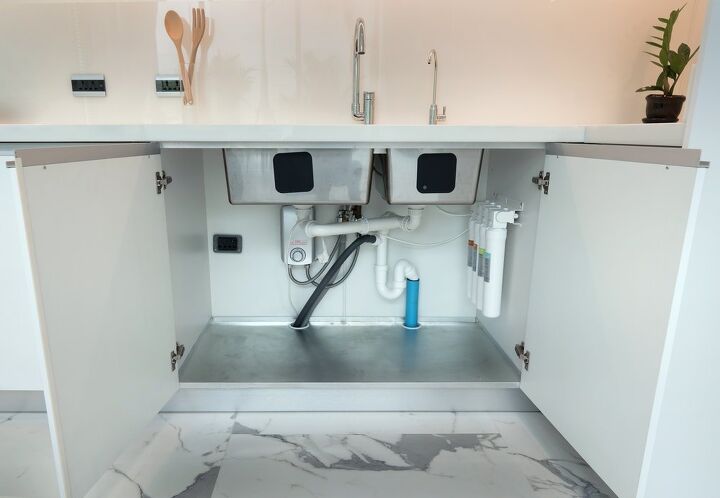






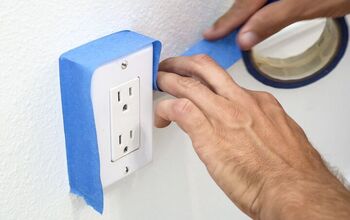

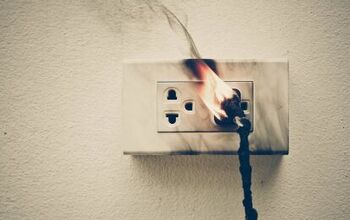
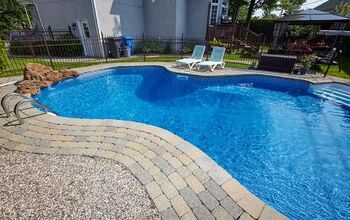
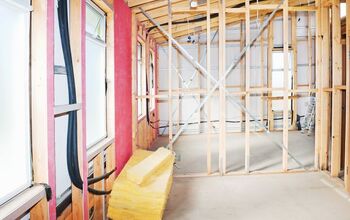


![Standard Dining Room Table Dimensions [for 4, 6, 8, 10 and 12 People]](https://cdn-fastly.upgradedhome.com/media/2023/07/31/9074335/standard-dining-room-table-dimensions-for-4-6-8-10-and-12-people.jpg?size=350x220)









